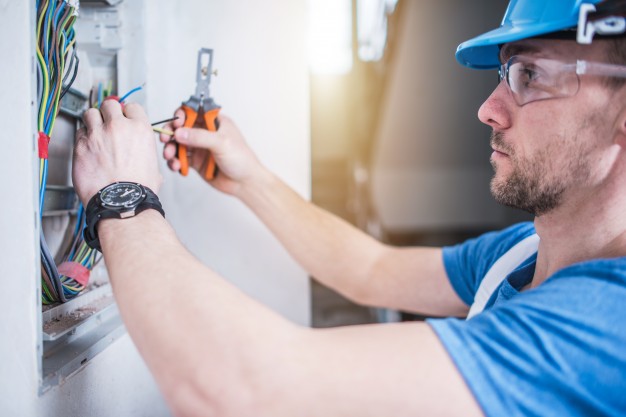What is a Domestic Electrician?
A domestic electrician mostly works inside houses and apartments. His job is fairly wide-ranging, involving running cable, installing lighting, and repairing basic electrical parts around the house. This job often involves laboring beneath floor boards, dusty attics, or cramped crawl spaces, so domestic electricians don’t have an easy task to do.
In addition to basic installations, a domestic electrician may plan full or partial structural electrical systems. When a small number of installations have been finished, the planning method becomes more straightforward. When thinking about the plan of an electrical system, there are two major factors to consider:
First is the environment of the electrical work. Electricity being run to a bathroom, for example, requires different necessities and safety considerations than a kitchen setup.
The next thing that any domestic electrician thinks about throughout the design of the electrical system is the power supply needs. This part can be separated into loads of zones. The amount of power a room needs dictates things such as the type and number of cables, the grounding method, and fault control.
Domestic electricians have the technical ability to easily adapt to the different types of installations required for residential use.
According to this domestic electrician in Wakefield, one of the most important things to be aware of is building codes and standards regarding the safe installation of power supply. This information is typically necessary when modifications to the electric wiring are completed. They are certified to remove and mount junction boxes as well as sockets in walls, floors, and other areas.
Another skill of a domestic electrician that is often underrated is communication. Often, they are working with homeowners who have little to no knowledge of even the most basic of electrical systems. A professional electrician will know how to explain the work they are doing or need to do in simple terms. Often, the difference between a well-explained electrical problem and a poor one is a matter of safety. Many homeowners might balk at the price of repairs and forego them simply because a bad electrician didn’t communicate the importance to them.
Likewise, domestic electricians must often communicate well with interior designers in order to strike a balance between aesthetic appeal, functionality, and safety. While the designers job may be to create a space that is pleasing to the eye and easy to live in, the electrician must help the designer know the best placement for fixtures, outlets, and switches based on the power supply needs of the house and local regulations
It’s a tough job, but someone has to do it. A domestic electrician bears a lot of responsibility, but without them, our homes couldn’t function the way they do.




